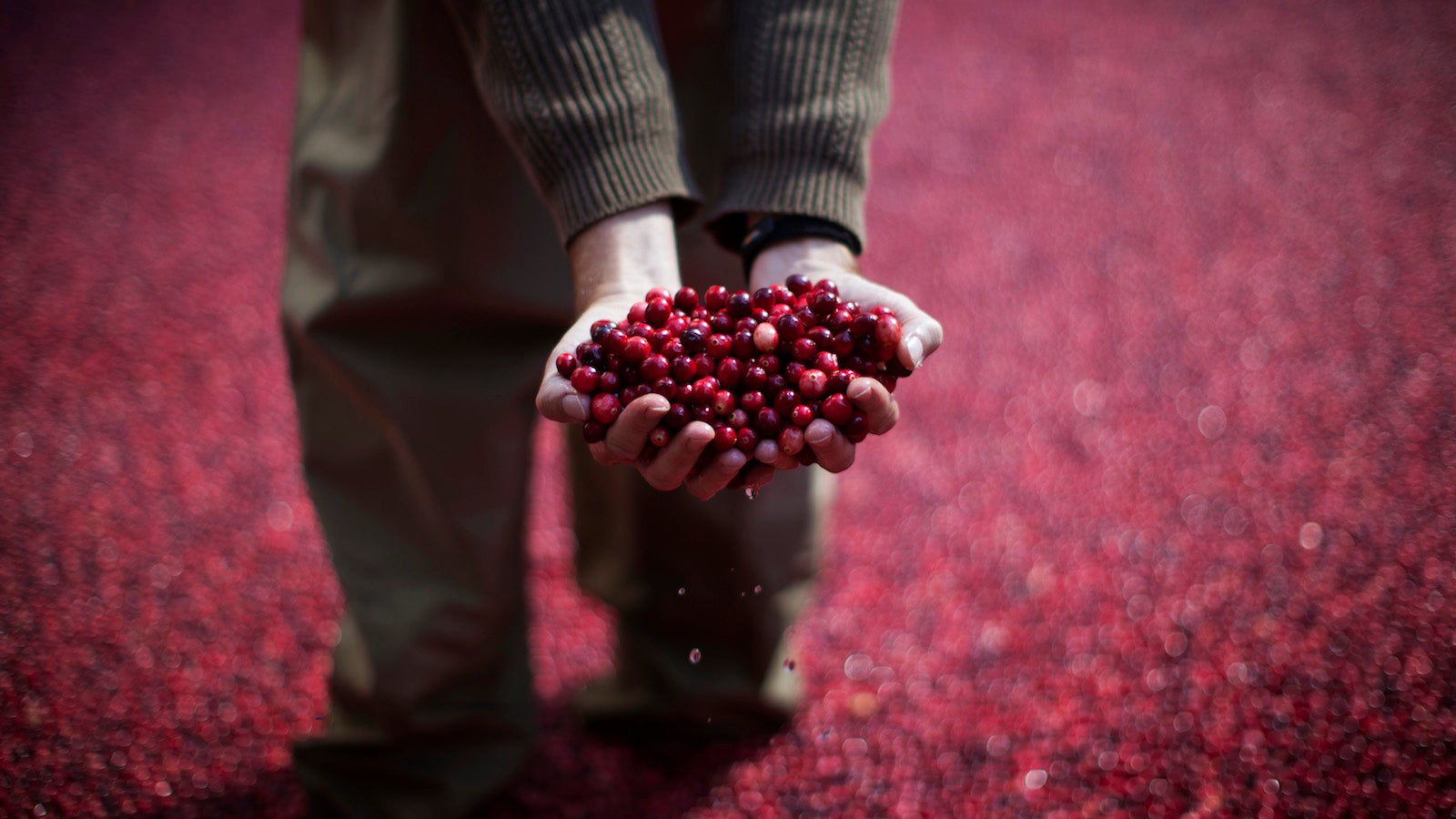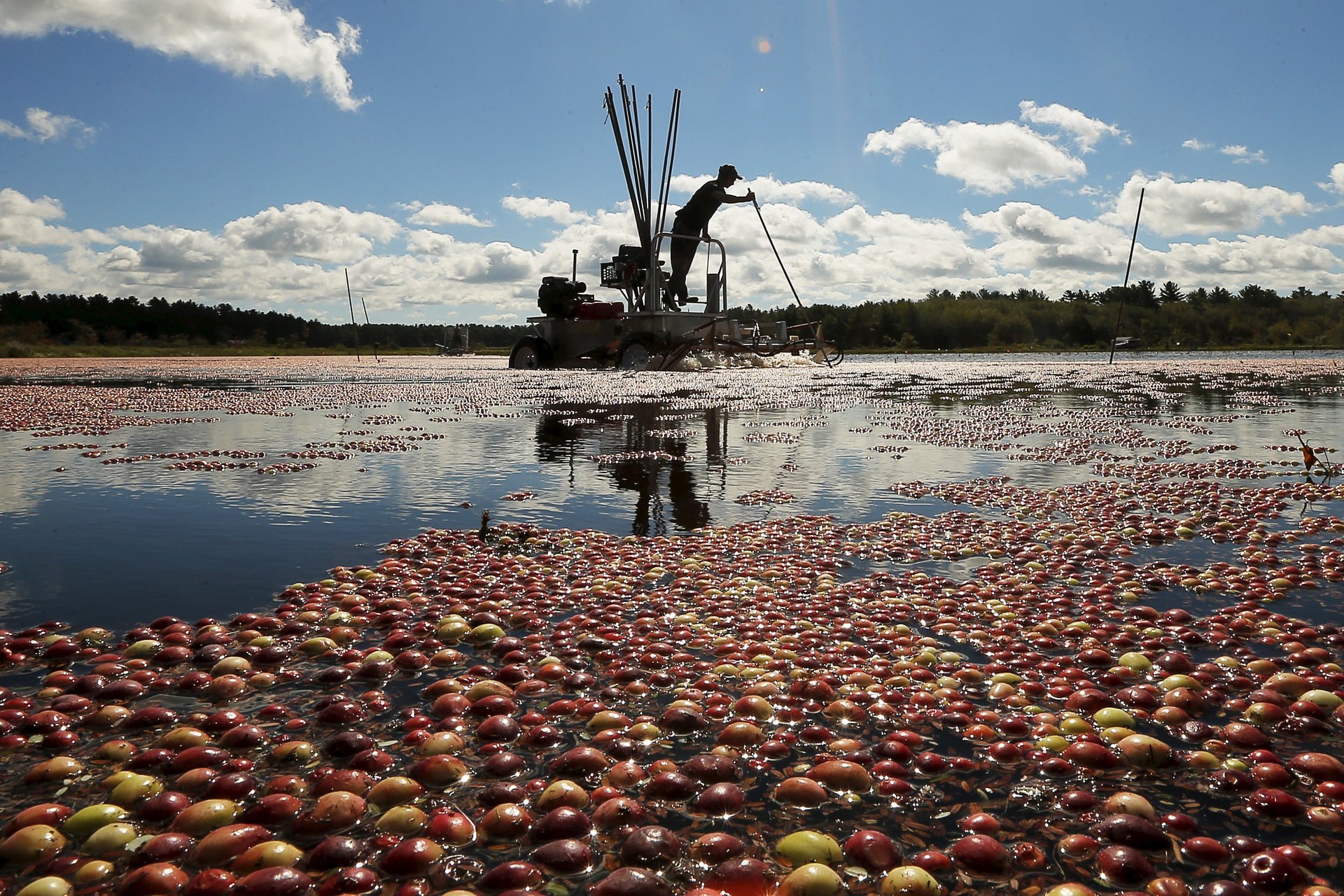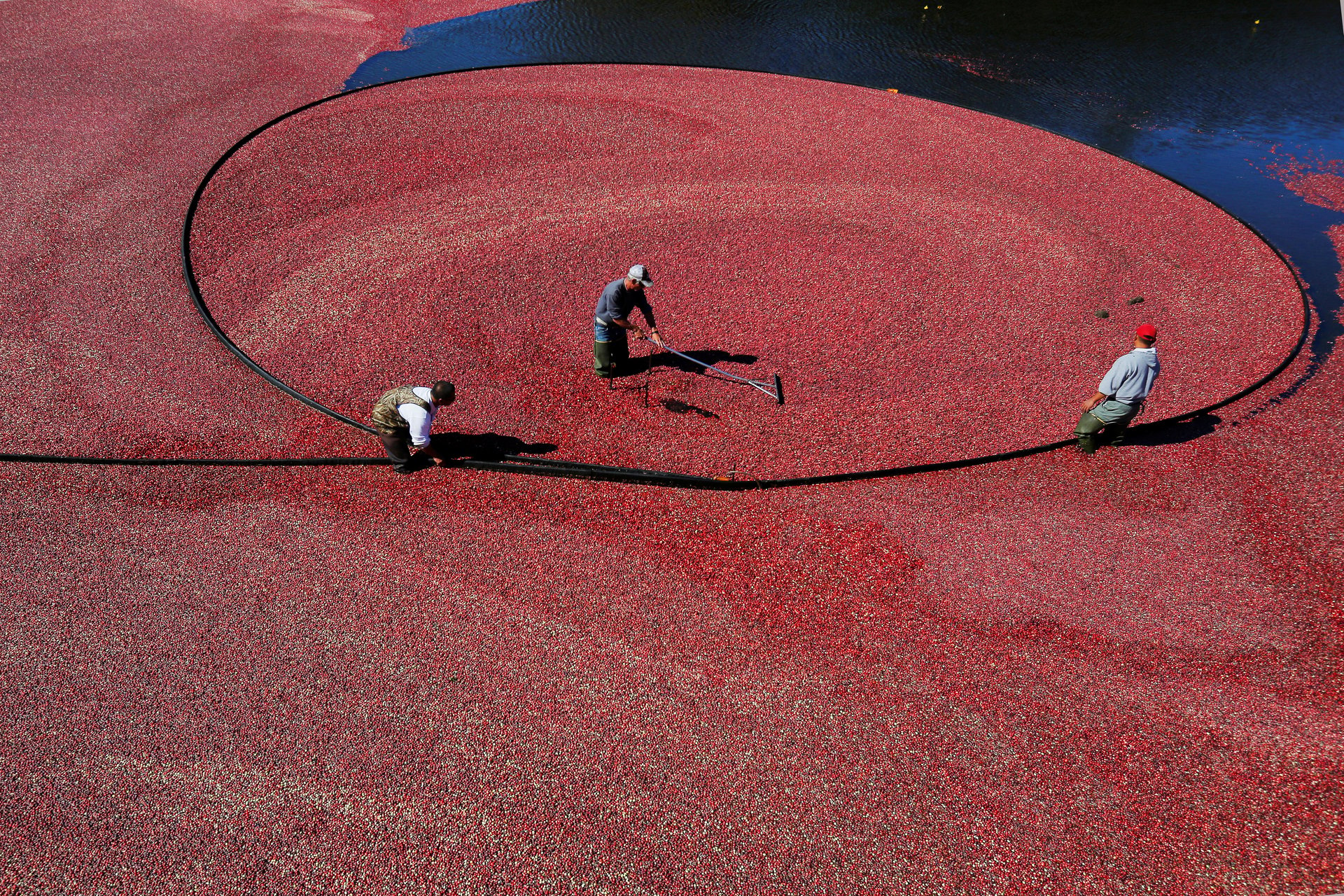The dark and sordid history behind America’s obsession with cranberries
Thanksgiving tables across America usually tend to look the same: the gigantic roasted turkey, the mashed potatoes, some sort of vegetable masquerading as a desert, and, of course, cranberry sauce. Depending on family traditions, that sugary smooshy stuff is either made from scratch with whole cranberries or plopped out of a can. But canned or fresh, there is a very high likelihood that your cranberries come with a less-than-sweet past.


Thanksgiving tables across America usually tend to look the same: the gigantic roasted turkey, the mashed potatoes, some sort of vegetable masquerading as a desert, and, of course, cranberry sauce. Depending on family traditions, that sugary smooshy stuff is either made from scratch with whole cranberries or plopped out of a can. But canned or fresh, there is a very high likelihood that your cranberries come with a less-than-sweet past.
Ocean Spray is the world’s leading supplier of cranberry-related products, controlling 75% of cranberry farms in the US and Canada since 1930. This includes their cranberry juice, fresh cranberries, craisins (which were created as an Ocean-Spray marketing ploy, by the way), cranberry sauce, and a whole smattering of other products. Ocean Spray sells 20% of their fresh cranberries during the week leading up to Thanksgiving—a whopping 80 million pounds of them.
The cheerful nature of Ocean Spray’s advertisements leads you to believe that cranberry farming is clean, natural, and safe: the cranberries sitting in lush fields of water, sparkling in the sunlight, and farmers talking about how many generations they have been sitting in a cranberry bog, just to bring fruit to your family’s table. Unfortunately, that’s not the full story.
Cranberries are grown in bogs primarily in the northern part of the US in soft, marshy ground with acid-peat soil. They’re hard to harvest on the vines they grow on, so instead, the bogs are flooded at harvest time, water reels pull them off the vine, and the cranberries float to the top, allowing them to be collected and sent off to market. Those images you see of farmers in waders, up to their chests in water with cranberries floating all around them? Totally accurate.

Cranberries aren’t easy to grow, and Ocean Spray figured that out quickly. In the 1950s, they began spraying bogs with aminotriazole, a chlorophyll inhibitor that had been known to cause growths in lab rats, as a means to clear the bogs of grasses, cat-tails, and other weeds. Farmers were only permitted to use aminotriazole one week after the November harvest so that it had rubbed off the finished fruit in time for Thanksgiving. But in 1959, word got out right before Thanksgiving that a small barrel of cranberries harvested in the Pacific Northwest had tested positive for the herbicide.
President Eisenhower did not eat cranberries for Thanksgiving that year, and neither did the majority of the country. In a single year, cranberry sales dropped by nearly 70% (pdf). According to the American Council on Science and Health, the great cranberry scare of 1959 set off the very first carcinogen panic in the United States. This scare was mostly overblown and overhyped: The lab rats would have had to consume truckloads of cranberries treated with aminotriazole before getting any tumor growths. Still, the negative publicity had a direct effect on sales, which should have been enough of an incentive to have Ocean Spray rethink their methods. It wasn’t.
Cranberries are a finicky crop, and Ocean Spray uses all kinds of chemicals to keep their production rates high. They do not use aminotriazole anymore, but they do use a whole host of other chemicals to keep their bogs contained, such as chlorothalonil, carbaryl, and pronamide. Ocean Spray tried to have some organic fields 12 years ago, but they abandoned the idea when it proved too costly and too much work.
Indeed, a lot of other cranberry farmers have become convinced that there is no viable way to grow them organically. They note that since cranberries are indigenous to the United States and have been around for centuries, all sorts of pests have grown alongside the cranberry. Weeds and fungi can become immune to pesticides, and strains can start to occur that require the use of new and different chemicals—this is particularly true when a crop has been cultivated for a long time, like cranberries. According to most farmers, this makes the use of chemicals necessary, and some would argue it’s the only way to grow the fruit. According to Massachusetts Cranberries, “Pesticides are an important part of a typical management plan used in all commercial agriculture including cranberries. In order to minimize pest damage, cultural controls, as well as biological and chemical controls, are used.”
Then there are the environmental considerations. Since cranberry bogs are pumped with water right before harvest, that water ends up mixing with the chemicals. Once the cranberries are harvested, that same pesticide-filled water is sent back through dams, ditches, and pumps, and ends up back in local bodies of water.

It would make sense for cranberry farms to be held to some US government oversight, such as the Clean Water Act, but due to a confusing loophole, they aren’t. Agricultural run-off from places like cranberry bogs and rice fields is not regulated, and Ocean Spray takes full advantage of that ambiguity. In Wisconsin, for example, cranberry bogs have destroyed more wetlands than all other uses combined, and the evidence is mounting that continuing non-organic farming of cranberries will continue to be an immense environmental hazard.
The lack of support, education, and proof that cranberries can be farmed organically has hindered the sustainability of the cranberry industry. Ocean Spray has made sure that cranberry farming has remained stagnant. With their deep market control they could help their farmers convert to organic methods, but it would be costly and time-consuming to do so. Instead, Ocean Spray all but requires their farmers to use these pesticides on their crops. In this way, they have been monopolizing the industry and controlling the narrative as a cost-savings strategy with little regard to the health of their farmers or consumers buying their products. Ocean Spray did not respond to our requests for comment.
But if you want to have your cranberries and eat them too, there are some sustainable companies out there beginning to combat the corruption, including Fresh Meadow Farms and Cranberry Hill Farms in Massachusetts and Starvation Alley in the Pacific Northwest.
Starvation Alley is hoping to change the way farmers grow their cranberries. They are doing this by incentivizing cranberry farmers to go through a three-year certifying process to become organic cranberry growers. “We’re a certified B-corporation—we open up our practices to other cranberry farmers to show them that you can grow cranberries organically,” says Alana Kambury, owner of Starvation Alley. “We learn a lot about cranberry farming from them too. In many cases, these farmers have been growing cranberries for generations—we’re new to it and have a lot to learn from each other.”
While those farmers are going through the lengthy transition from being conventional cranberry farmers to become certified organic, Starvation Alley buys their fruit so those farmers don’t take a huge loss while they are transitioning. “We buy their fruit at 75 cents per pound, which is well-above what most conventional farmers are paid: The market rate has been dropped to 20 to 25 cents per pound, which isn’t financially sustainable. It’s very hard to be a cranberry farmer right now,” Kambury says. By paying conventional farmer’s a premium for their fruit as they undergo organic certification could be a game-changer in how all conventional farms begin to make the switch. Starvation Alley then uses transitioning farms’ fruit in products such as raw, cold-press juice to a variety of businesses looking for a high-quality cranberry concoctions, including Salt & Straw ice cream, Hopworks‘ beer, and various kombucha companies.
“There are so few resources for organic cranberry farming. Most commodity crops have federal funding and grants to grow their crops organically. That doesn’t exist for cranberries,” Kambury says. By going organic, 100 pounds of fertilizers per year per one-acre bog are kept out of the local waterways. This works to provide a long-term solution that will ensure future organic crops and the health of the surrounding environment.
Kambury is hoping to use her experience to create change within the cranberry industry. In February 2017, Starvation Alley is holding the first organic cranberry farming conference in the US. Kambury explains that regardless of whether or not attendees want to partner with Starvation Alley in the future, she wants to create a network of support and community for all organic cranberry farmers.